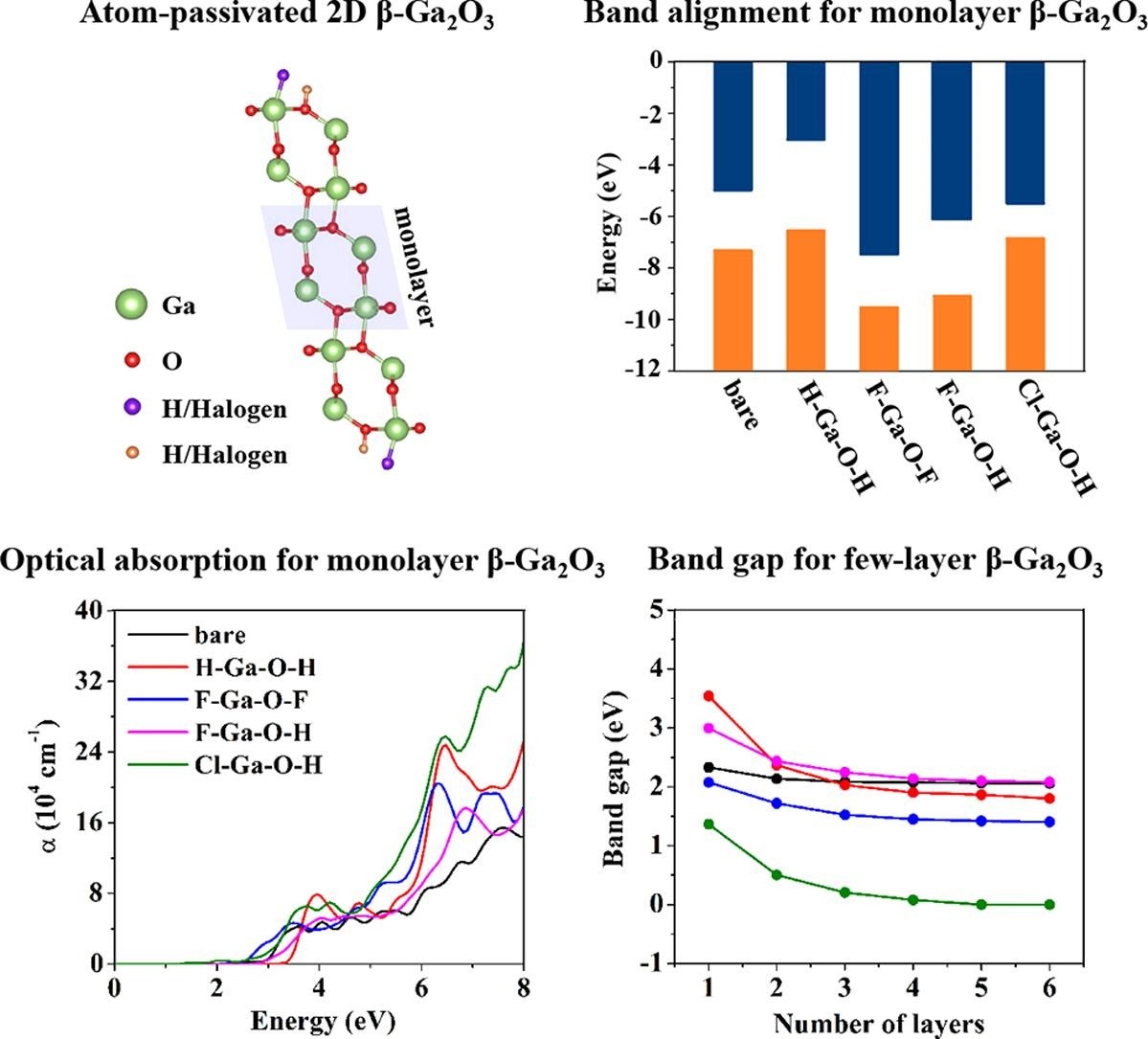

【Others Papers】Tuning the optoelectronic properties of two-dimensional β-Ga₂O₃ using surface passivation and the layer thickness
日期:2024-11-29阅读:532
Researchers from the Liaocheng University have published a dissertation titled "Tuning the optoelectronic properties of two-dimensional β-Ga2O3 using surface passivation and the layer thickness" in Computational Materials Science.

Abstract
In this study, we aim to comprehensively investigate the effects of surface passivation and layer thickness modulation on the structural and optoelectronic properties of 2D β-Ga2O3 using first-principles calculations. Our bonding character simulations predict the formation of fully hydrogenated, fully halogenated, and hydro-halogenated monolayers of β-Ga2O3. The results show that hydrogenation, fluorination, hydro-fluorination, and hydro-chlorination effectively passivate monolayer β-Ga2O3, whereas chlorination, bromination, iodization, hydro-bromination, and hydro-iodization do not. The failure of these latter processes is attributed to the large atomic radii of the passivating atoms, which induce significant lattice distortions. The electronic properties, including band gap and band edge level, are primarily influenced by the electronegativities and orbital energies of the passivating atoms. For pristine 2D β-Ga2O3, electronic properties are largely independent of layer thickness. However, in atom-passivated 2D β-Ga2O3, band gaps and electron affinities vary with the number of layers due to enhanced coupling between the passivating atoms and Ga/O, along with relatively minor shifts in the conduction band minimum. Additionally, both atom passivation and layer thickness modulation improve various optical properties of 2D β-Ga2O3, including dielectric function, optical absorption, and photoconductivity. Notably, the newly reported hydro-chlorination configuration demonstrates lower energy compared to previously reported configurations, along with a direct band gap, an elevated valence band edge, and enhanced optical absorption relative to its bare form. Our study provides theoretical insights into the manipulation of electronic and optical properties in 2D β-Ga2O3, establishing a foundation for surface charge transfer doping of β-Ga2O3.
DOI:
https://doi.org/10.1016/j.commatsci.2024.113346


